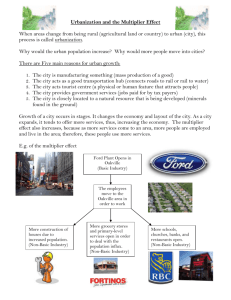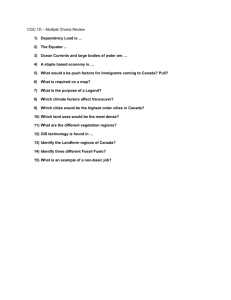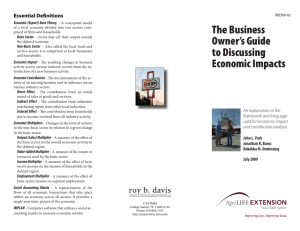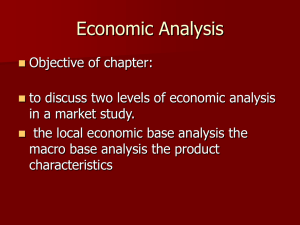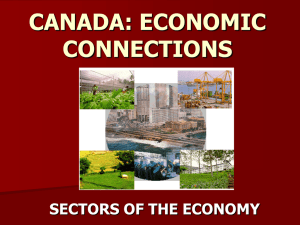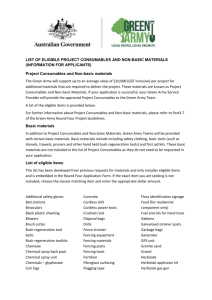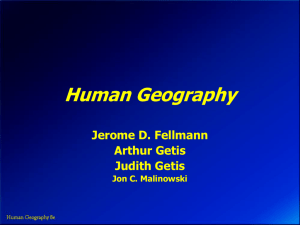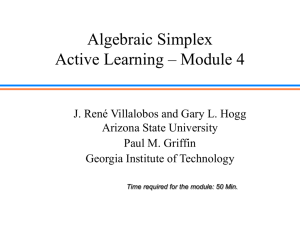Urban Functions
advertisement
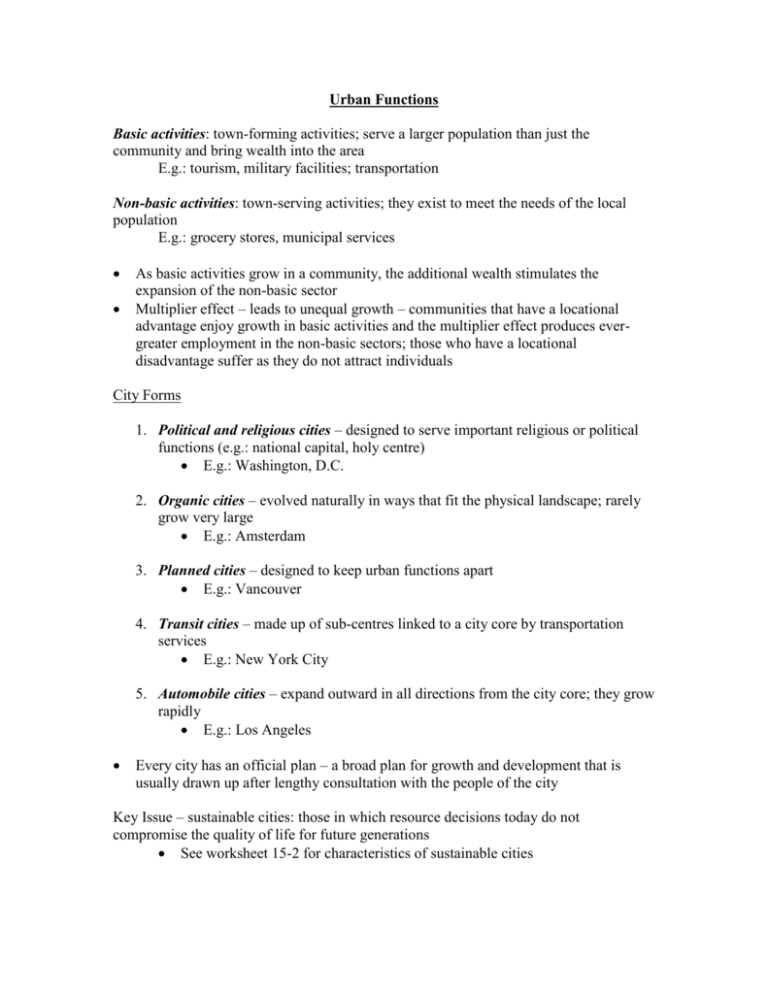
Urban Functions Basic activities: town-forming activities; serve a larger population than just the community and bring wealth into the area E.g.: tourism, military facilities; transportation Non-basic activities: town-serving activities; they exist to meet the needs of the local population E.g.: grocery stores, municipal services As basic activities grow in a community, the additional wealth stimulates the expansion of the non-basic sector Multiplier effect – leads to unequal growth – communities that have a locational advantage enjoy growth in basic activities and the multiplier effect produces evergreater employment in the non-basic sectors; those who have a locational disadvantage suffer as they do not attract individuals City Forms 1. Political and religious cities – designed to serve important religious or political functions (e.g.: national capital, holy centre) E.g.: Washington, D.C. 2. Organic cities – evolved naturally in ways that fit the physical landscape; rarely grow very large E.g.: Amsterdam 3. Planned cities – designed to keep urban functions apart E.g.: Vancouver 4. Transit cities – made up of sub-centres linked to a city core by transportation services E.g.: New York City 5. Automobile cities – expand outward in all directions from the city core; they grow rapidly E.g.: Los Angeles Every city has an official plan – a broad plan for growth and development that is usually drawn up after lengthy consultation with the people of the city Key Issue – sustainable cities: those in which resource decisions today do not compromise the quality of life for future generations See worksheet 15-2 for characteristics of sustainable cities A sustainable approach recognizes the decisions must take into account the community, economy, and environment and the ways in which these components interact Urban Problems and Sustainable Opportunities 1. Energy Consumption Cities account for 80% of world’s use of fossil fuels Sustainable cities would reduce amount of energy required (e.g.: local renewable forms of energy, solar roof tiles) 2. Transportation In North America, 94% of urban dwellers commute to work by car Reducing reliance on cars reduces pollution and increases space for more beneficial uses Key to making transportation in cities sustainable is to make cities more compact (build up instead of out) 3. Food 4. Density Almost all food in cities has to be transported (cost and pollution) More local food supplies would be available if zoning protected agricultural areas from urban growth Too many cities waste space In sustainable cities, people use less space (e.g.: infilling – increases density by rezoning and rebuilding in populated areas to allow more people to live in the same place)
